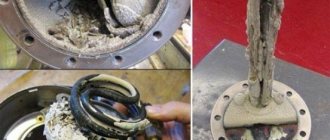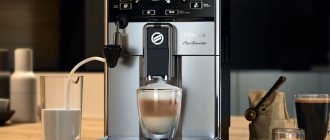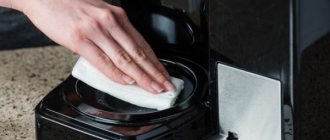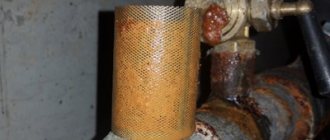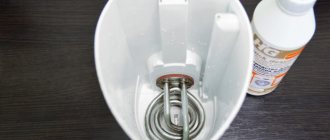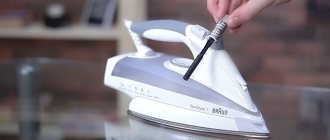Hard water is an everyday reality in our homes. Therefore, it is enough to neglect cleaning the Nespresso for a short time in order to then deal with a thick layer of scale on its parts. After all, some minerals, such as calcium and magnesium, affect the formation of scale when exposed to temperatures above 550C.
Calcified deposits not only affect the taste of the coffee, but also significantly reduce the performance of the machine. However, there are many home remedies that will magically help remove plaque.
To ensure that your equipment always works properly, it is useful to know how to descale your Nespresso coffee machine at home.
How to rinse using special products?
Most companies that produce coffee machines also produce special products for descaling them. As a rule, they are sold in the form of tablets, powders or liquids that allow you to quickly remove lime deposits.
Anti-scale tablets
Use decalcifying agents to remove salt deposits.
The frequency of use of such drugs depends on the concentration of calcium and magnesium salts in the water:
- when using high-hardness liquid, clean with tablets once a month;
- if the water is of medium hardness, the frequency of use is once every 3 months;
- soft liquid - use tablets once every 5-6 months.
The cleaning procedure is very simple: place the product in the device's reservoir filled with water and start the coffee brewing cycle.
After descaling, rinse the unit 2-3 times with water (fill the reservoir with clean liquid and start the drink preparation program).
Caffenu cleaner capsule
This product is intended for cleaning device parts in hard-to-reach places.
The procedure for maintaining a coffee machine using a capsule is extremely effective and very simple:
- Place the preparation in the container for coffee capsules and start the drink preparation cycle;
- After 2-3 minutes, the product will dissolve all existing contaminants in the device and remove them when you press a button.
Operating rules
Following the manufacturer's recommendations will increase the life of the coffee machine and enjoy a pleasant drink. For this it is enough:
- use original capsules,
- regularly clean with professional products,
- do not turn off the device in the middle of the drink preparation cycle,
- make repairs in authorized centers.
Regular cleaning of the coffee machine is the key to its long operation.
Traditional methods
It is useful to know such descaling methods if the time for cleaning has come, but special means are not available. In terms of efficiency, they are inferior to professional means, but in terms of aggressiveness, on the contrary, the indicators are higher. An environment that is too aggressive will quickly damage rubber seals and sealing units.
It is important to clean all parts of the coffee machine in a timely manner.
Lemon acid
10-20 grams of powder are added to 1 liter of water, depending on the contamination. It is recommended to pour the powder into warm water, so the citric acid will dissolve faster. This solution is then used according to a special algorithm.
The machine must be turned on, wait until the solution enters the heating container and turn off. Let stand for 2 hours, then turn on the preparation of the drink. After cleaning, clean water is poured into the tank and the device is washed 2-3 times.
Lemon juice for cleaning.
Vinegar solution
This solution removes scale and coffee oils. It is prepared from 1 part acid and 2 parts water. The dosage is given for a 9% acetic acid solution. Then it is used as indicated in the previous case.
Soda and salt
Use a homogeneous solution made from 1 tablespoon of salt and 1 tablespoon of soda. It is poured into the water tank and run through the brewing cycle without any down time. Next, the coffee machine is washed.
Standard method - hand washing
Even washing the device with ordinary means helps slow down the formation of scale. To understand how to do it correctly and get the desired result, use step-by-step instructions:
- The tray is removed from its mounting location and washed using the usual dishwashing detergent or soap, and then under running water. After leaving it to dry, we take on the next knot.
- The same procedure applies to the capsule container, water tank and machine lid.
- Be sure to wipe the capsule intake sensor.
- The drink dispenser is also washed.
- Wipe and, if necessary, wash the outside of the body and accessible components. Afterwards the device is assembled in the reverse order.
The machine is cleaned when the taste changes.
Easy to prepare - easy to maintain?
In our case, when working with water where there are heating elements, there is no escape from this unpleasant word - scale. Hard water contains potassium and magnesium salts, and when heated, they turn into a hardened element. If you do not clean your coffee machine in a timely manner, then you will face minor troubles that lead to complete collapse and failure of your machine. Drinking soft water to avoid scale is not a solution, since the prepared coffee will not have a unique aromatic taste.
In this case, you need to use a water softener or use distilled water. But what to do if you missed the moment and brought your coffee machine to such a state that it needs cleaning. Are you confused about how to descale your nespresso coffee machine? Let's figure out how critical the situation really is.
According to the advice of experts, and as provided in the instructions, only special products intended by the manufacturer are used to clean the device.
You can, of course, do it at your own peril and risk - resort to the help of traditional methods, but you need to be careful. In the case of a coffee machine, you need to use only a proven method, because the equipment is not cheap, and various chemical compounds can harm your health.
What can pollution lead to?
When scale appears, heat transfer deteriorates, as a result of which the temperature of the heater will be higher and its service life will decrease. By settling on the walls of the tubes, limescale reduces the diameter of the hole. Increased pressure creates additional stress on the sealing elements of the structure. This will lead to premature failure of the coffee machine units.
Why fight sediment?
For normal operation of the device, it is necessary to descale it throughout its shelf life. In addition, timely cleaning guarantees the expected and familiar taste of coffee.
How to use a Nespresso coffee machine
When choosing a device for preparing a drink from roasted coffee beans, many gourmets want to buy the best. There is a very wide selection of kitchen appliances on the market. The Delonghi Nespresso capsule machine is in a category of its own. This is a modern technology that requires minimal effort from a person.
A specially designed form of blanks for the operation of the machine allows you to get aromatic espresso in about 30 seconds. The system involves piercing the capsule and moving the contents under pressure with the optimal amount of hot water into the cup.
Models with a wide range of functions will allow you to enjoy ristretto, lungo, cappuccino, latte and other types of popular drinks. The cost of a Nespresso coffee machine varies depending on additional options. Compact models with a small water capacity (0.5 liters) are available. The absence of a cappuccino maker cannot be considered a significant drawback. Latte or cappuccino turns out great thanks to precise proportions and optimal hot steam pressure.
Exploitation
The operating principle of Nespresso is simple and effective. Therefore, it will take a minimum of effort to get a cup of aromatic espresso. The whole process is as follows:
- Water is poured into the tank.
- The capsule is placed in a special compartment.
- The start button is pressed.
It will take 30 seconds for the liquid to heat up (a little below 100 degrees) and flow into the cup through the capsule.
Coffee makers with several types of drink require you to select one from a list. There is no need to worry about the dosage of water. The use of a certain amount is programmed. It is only necessary to regularly monitor the general level.
Useful additions
When choosing a coffee machine, it is recommended to pay attention to the presence of a self-cleaning function. It will make caring for the equipment much easier for the owner.
Less scale will form and it will be easier to remove. Nespresso manufacturers try to equip all their models with self-cleaning, which is very pleasing.
The removable brewing unit is also a useful feature that helps keep the device clean. Regular rinsing of this container will reduce the risk of scale formation, which will extend the life of the equipment.
It doesn’t matter which coffee machine you choose, the main thing is to take good care of it - regularly clean it of scale and remaining coffee powder. Then you can prevent device failure and enjoy aromatic freshly brewed coffee throughout the day.
Capsule coffee machines are becoming more popular than ever before. People are turning away from cheaper coffee in favor of high-quality blends with unique flavors and aromas. In principle, this trend has been observed before, but 10 years ago you had to buy an expensive and bulky coffee machine. Now, when capsule models have replaced traditional machines, everything has become much simpler.
More and more coffee lovers are enjoying espresso and cappuccino at home, because these drinks are available at the touch of a single button. With a wide variety of coffee blends available, including flavored coffee, hot chocolate, and even tea capsules, there's something for everyone. There are so many options to choose from. But they are all prepared the same way, and after brewing the coffee machine gets a little dirty. Sometimes it needs to be cleaned.
Standard method - hand washing
We will tell you how to clean capsule coffee machines below. In the meantime, it’s worth noting that the manual method of washing works quite well. Unlike conventional coffee makers, which should preferably be washed every day, a capsule coffee machine can be washed once every 1-2 weeks. It does not need more frequent washing, since the car gets dirty very slowly and generally remains clean for a long time.
The main elements that need to be washed:
- a hopper in which the capsule is installed;
- container for capsules (this is only available on machines with automatic capsule removal);
- a straw of a cappuccino maker (of course, if it is present);
- boiler compartment (scale may appear in it from time to time).
Give your capsule coffee machine about 15 minutes every week and it will be in perfect order! But you shouldn’t completely ignore washing, because without cleaning, the machine will begin to deteriorate faster, and its service life will be quite short. In addition, milk and coffee residues inside the device can oxidize, and this should not be allowed.
Complete cleaning of the coffee machine
For deeper descaling, a full rinse will be required. In professional models, a special indicator will notify you of this; in all other cases, it is recommended to do so at certain intervals. The rinsing itself consists of 2 parts: the actual rinsing and rinsing.
You need to do the following:
1. Pour the decalcifier solution into a tank of water. In extreme cases, a solution of citric acid will do, but in this case you need to be as careful as possible!
2. Prepare a container for the dispenser and a steam wand (if available).
3. Next, you need to enter the washing mode. Usually, to do this, it is enough to press a combination of 2-3 keys. If this is not possible, the pouring is done manually by holding down the coffee supply key.
Care every day
- Dilution of a decalcifier in warm filtered water, which promotes the dissolution of calcium, magnesium, and iron salts. The resulting solution is poured into the coffee maker reservoir.
- Starting the brewing mode (without adding coffee). Empty all trays first and remove the filter from the device. Only then pour the product into the hopper.
- Thoroughly clean the device.
- Idle start of operating mode (several times in a row)
REFERENCE! The removable unit must be cleaned at least once every 1-2 weeks.
Capsule coffee maker
Let's take a closer look at what a capsule coffee maker is.
Coffee machines, or capsule-type coffee makers, are devices for preparing coffee using special containers - capsules. These are small, hermetically sealed cups, tightly packed with ground roasted coffee, as well as inert gas to preserve the raw materials.
Such packaging retains all the taste and aroma properties of coffee for 9 to 16 months, depending on the material from which the container is made.
How the coffee maker works
Ease of use allows the manufacturer to avoid writing long instructions on how to use the capsule coffee machine. All you have to do is fill the reservoir with water, plug in the device and select a glass of the type of drink.
Usually there are no difficulties with how to insert the capsule into the coffee machine. After installing the capsule in the appropriate slot and securing it with a lever using the power button, the process of piercing the cup lid starts, after which hot water flows into the cup under a pressure of 16–19 bar.
The used container either falls into the reservoir (if there is one) or is immediately thrown away.
Advantages and disadvantages of capsule coffee makers
Having figured out what a “capsule coffee machine” means, let’s compare its pros and cons.
Pros:
- Easy to use: plug in, pour water into the tank, place the container in the slot and press a button.
- Easy to care for. You should occasionally wipe the device with a damp cloth and throw away the used capsules. It is better to use well-purified or boiled water in the device, otherwise the scale will have to be cleaned with special means.
- The thick taste of a coffee drink, achieved by preparing coffee under a certain pressure.
- Small sizes.
- Efficiency in action, reducing the preparation of the drink after installing the capsule into the device to 1 minute.
- A price that is several times less than the cost of even the most inexpensive coffee machine.
Minuses:
- Coffee containers are not cheap, so each cup of capsule coffee is much more expensive than one brewed, for example, in a Turk.
- The coffee maker cannot work without special capsules; you must always keep a supply of them. Without them, the capsule system is useless.
Capsule varieties
A variety of types of cups allows you to quickly prepare different drinks at home:
- espresso;
- ristretto;
- Americano;
- hot chocolate;
- cocoa;
- coffee with milk;
- tea with mountain herbs.
Step-by-step instructions for nespresso descaling
Instructions for cleaning Nespresso Delonghi capsule and regular:
- Remove grounds from the waste container or used capsules and clean the drip tray.
- Prepare a solution of descaling agent as written in the manual.
- Pour it into the water container and start the cleaning mode. Place a cup under the spout that can hold the entire amount of liquid from the reservoir.
- After the first cleaning cycle, some manufacturers recommend pouring the cleaning solution back into the reservoir and starting the process again.
- Pour the used liquid into the toilet.
- Pour clean water into the container and rinse the system once. When using original cleaning solutions, once is enough.
Next, you should rinse the pan and water tank under the tap and install them in place. If there is a remote milk jug, it is washed under the tap; if there is a built-in cappuccino maker, it is washed along with the entire device with chemicals and then with clean liquid.
Scale prevention
If you already have a coffee machine in your home, you need to take care of it regularly. If someone is just going to buy a coffee maker, then the removable brewing unit will make further maintenance easier, since it can be periodically removed and washed separately from the entire machine.
Nespresso tries to equip all its models with a self-cleaning function, which also partially frees owners from the need to frequently wash internal parts.
Video: How to properly descale
The use of a built-in filter that traps calcium and magnesium ions also prevents the rapid deposition of salts - until the liquid is heated. Some brands have invented a solution that softens water - it is added to a separate reservoir, and then it drips into the liquid and makes it soft. True, for this it is necessary to carry out additional measures in the service to add the necessary tank.
The cheapest and surest way is to buy clean water with a low percentage of salts only for your home coffee machine.
The bitter-tasty smell of coffee seems to fill you with cheerfulness and paint your gray everyday life in joyful colors.
Nowadays, preparing a drink, thanks to the advent of special devices - coffee machines, requires minimal effort: just pour in ground beans or load a special capsule into the device - and in a few minutes a cup of hot aromatic liquid is in your hands.
As in other devices that come into contact with water during operation, scale forms on the elements of the coffee machine over time, which must be periodically removed.
How often should you wash your car?
Nespresso should be cleaned at least once every three months. If you do not brew coffee often, then you can focus on the number of servings made - the norm is 300 pieces, after which the machine is washed.
It is recommended to test the water for the presence of salts. The following may be present in dissolved form in tap liquid:
- Iron salts. The color of the deposits will have a reddish tint.
- Magnesium and calcium salts.
- Ions of other metals, such as aluminum.
- Gases.
When heated, they form hard, porous deposits that interfere with the normal operation of the device.
Distilled water contains no impurities, making it an ideal liquid for coffee machines. If you have a built-in reverse osmosis filter at home, it is recommended to use such water to fill the coffee maker container.
If you use tap liquid, cleaning will have to be done more often. How often can be determined by the scale in the kettle. If a thick layer accumulates on the inner walls within a month, then the coffee maker needs to be cleaned twice a month.
If you calculate the costs of bottled water and compare them with the purchase of professional descalers, then it will be cheaper to buy water in a store.
Use of other special means
If the product is universal and the manufacturer clearly indicates this on the packaging, you can safely use it. Proper cleaning of a coffee machine from the manufacturer Delonghi can be done with improvised means, for example, citric acid. This product needs to be diluted, poured into the tank and turned on.
Acid is a natural, safe cleanser for the human body that removes the effects of hard water.
Cleaning the filter is no worse than using specialized means. Acid is a natural, safe cleanser for the human body that removes the effects of hard water. If you heat it to a high temperature, it will also cope well with scale.
Why is scale dangerous for a coffee machine?
Why is scale dangerous for a coffee machine?
Regular tap water contains a number of chloride and potassium compounds, which at high temperatures create limescale. It not only coats the internal elements of the equipment, but also gets into your cup of drink, spoiling its taste. Scale seriously reduces the service life of the coffee machine, and even damages its components. Its next harm is in the porous surface. This is a fairly convenient environment for the birth and activity of various harmful microorganisms.
What is decalcification of a coffee machine
Drinking water always contains a certain amount of calcium salts. There are more of them in hard water, less in soft water, but in any case they are present. During the operation of the coffee machine, these salts are gradually deposited on its various elements in contact with the aquatic environment, and over time they form plaque (scale). Because of this hardened deposit, the machine begins to work worse, and the coffee develops an off-flavor. There is only one way out of the described situation - cleaning the coffee machine from accumulated deposits, also known as decalcification.
Table-review of purchased decalcification products
There are many products on sale that remove scale from various types of coffee machines. For ease of comparison, the characteristics of some common tools are summarized in a general table.
| Name | Type | Peculiarities | Package volume |
| Top house | Liquid or tablets | Manufactured taking into account the recommendations of manufacturers, made in Germany | 0.25 liters of liquid for two uses or 8 tablets per pack for 8 uses |
| Topper 3006 | Liquid | Manufactured taking into account the recommendations of manufacturers, made in Germany | 0.25 l for two uses |
| DeLonghi DLSC500 | Liquid | Optimized for DeLonghi equipment, but also suitable for other brands, made in Italy | 0.5 l for 4 uses |
| Philips-Saeco CA6700/00 | Liquid | It has a soft action, protects against corrosion, made in Germany | 0.25 l for one cleaning cycle |
| Melitta | Liquid or powder | Features a mild action, made in Germany | 0.25 l liquid for five cleanings or 2 sachets for two uses |
| Bosch TCZ8002 | Pills | Instant tablets, made in Germany | The package contains three tablets for three uses |
| Filtero | Pills | Instant tablets, made in Germany | Pack contains 4 tablets for four uses |
Top House
Topper 3006
DeLonghi DLSC500
Philips-Saeco CA6700/00
Melitta
Bosch TCZ8002
Filtero
Cleaning kit from the manufacturer
The manufacturer has specially developed chemicals for cleaning Nespresso krups coffee machines and other types of capsule or carob units. For built-in cappuccino makers, additional liquids or tablets are available to remove residual milk fat from the walls of the container and the conductive tubes.
There is a separate liquid from the oily residue that forms in the cooking group, but most often two ingredients are combined in one product, simultaneously cleaning all contaminants.
Helpful tips for use
Caring for a coffee machine is not as difficult as it seems at first glance. It is enough to know all the potential dangers and take preventive measures in time:
- scale You should get rid of it immediately after the alert appears on the display. If this function is missing, you should make notes to yourself about the frequency of this procedure. A water filter will help reduce the time for processing and reduce the frequency of its implementation. It will soften and purify tap water;
- coffee oils. They settle on the internal parts of the device and over time distort the taste of the finished drink. Removal of these contaminants is required after every 200 coffee brewing cycles. For work, the same products are used as for descaling;
- coffee grounds. It hardens in the tubes of the device and impedes the passage of liquid. You can get rid of it by using the tube flushing function. It must be performed once every 2-3 weeks;
- milky coating. If steam is poorly supplied to the milk from the cappuccino maker, then the culprit is milk deposits on its walls. It is possible to get rid of it using the method described above.
Delonghi coffee machines require regular maintenance and cleaning. For this purpose, special cleaning products of the same brand are used. All of them are completely safe for humans and do not have any effect on the taste of coffee.
Selecting cleaning products
There are several ways to clean a Nespresso capsule or carob coffee machine. For this purpose, you can purchase the original Delonghi Ecodecalk liquid of 500 ml. The quantity is enough for 4 – 5 uses, since the solution is concentrated. The composition includes several acids:
- lemon;
- maleic – a derivative of malic acid, a safe substance for health;
- phosphonic - prevents the rapid appearance of new sediment on the walls of parts.
All components are selected and designed in such a way that after the final rinsing, no harmful substances are detected in the coffee, and the walls of the tubes and main parts are not damaged by chemicals.
If you use improvised means, it will cost less. True, the complete cleaning cycle will have to be repeated 3–4 times to completely remove scale. Use citric acid or vinegar in diluted form.
If there is no specialized product for decalcifying a Nespresso coffee machine in the store, according to the instructions, you can use other products, for example, intended for other brands of machines.
How to clean a Nespresso coffee machine?
How to clean a Nespresso coffee machine?
Nespresso is one of the most popular coffee machines. You can tell that your device needs descaling by obvious signs:
- the machine “reports” the problem on the screen;
- the coffee comes out in a very thin stream;
- The device became very noisy during operation.
As a rule, it is recommended to remove scale at least every 3 months. The simplest procedure is to clean your Nespresso coffee machine manually:
- Remove the tray and wash it in a soapy solution of regular dishwashing gel. Rinse thoroughly and air dry.
- Take out the container for the capsules - it is also washed in a soapy solution and dried with a towel.
- Treat the water tank and the lid of the coffee machine with the same foam solution.
- How to clean a capsule coffee machine? Remove the element holding the cups and wipe the capsule intake sensors with a dry cloth.
- Clean the dispensing unit.
- Finally, wipe the outer parts of the case first with a dampened and then dry cloth.
To descale Nespresso machines, you can use both store-bought and folk remedies. So, this is most often recommended to clean a Nespresso capsule coffee machine:
- Lemon acid. Add up to 30 g of acid powder to warm water and mix thoroughly. Pour the solution into a water tank and leave it there for 2-3 hours without turning on the equipment. Then turn on the machine and allow it to drain all the water from the tank. If there are “flakes” or other scale particles in the liquid, repeat cleaning until they are completely removed.
- Vinegar. Mix water and table vinegar in equal proportions and pour into the water tank of the machine. While it is not working, the solution “infuses” for 2 hours. Turn on the machine to brew coffee, then turn it off. Pour out the unused solution and rinse the tank. Then pour up to 200 ml of water into the tank and activate the working cycle. If necessary, repeat the entire procedure again.
- Salt + soda. Dissolve 1 tbsp in water. a spoonful of salt and 1 tbsp. a spoonful of soda - the volume of liquid should be approximately equal to the volume of the water tank of the machine. Pour in the solution and start the coffee preparation program. After the cleaning agent runs out, pour regular water into the tank and turn on the operating cycle twice to complete a complete rinse.
How to clean a Nespresso coffee machine?
You can also use special anti-scale tablets to descale your Nespresso coffee machine:
- If the water is very hard, cleaning every month is recommended.
- Medium hard water - cleaning every 3 months.
- Soft water - cleaning every 6 months.
Using the tablets is as easy as shelling pears:
- Fill the reservoir with water and add the recommended number of capsules or tablets.
- Start the coffee program.
- At the end of the procedure, repeat the washing 2-3 times, but using only water.
Compartment for pulp
- Turn on the device, wait until it warms up and flushes the system.
- Click on Descale or Cale - hold the key for about 5 seconds.
- The machine independently cleans the beverage dispenser, after which it “asks” to add an anti-lime preparation.
- You can descale your coffee machine using either special gel or tablets for coffee machines.
- If you have a liquid cleaner, pour 150-500 ml of the product (based on the dosage in the instructions). If necessary, increase the volume to 0.5 l - this is the mark on the Cale tank.
- To clean a coffee machine at home using tablets, you will need 2-3 pieces - they are placed in the water tank of the machine, filled with 0.5 liters of water, and wait until completely dissolved.
- Place a basin or bowl under the coffee machine tap that can hold 0.5 liters of water.
- Cleaning the coffee machine with a tablet is very simple. Depending on the model, click on “Start”, “OK”, “Steam”.
- The machine will run 100-150 ml of water at a time, taking breaks of 5-10 minutes, until the entire supply of cleaning product in the tank is exhausted. In this case, the pump may operate unusually loudly, even crackling.
- When cleaning is complete, the “Add water” or “Empty tray” indicator will appear. Rinse the water tank of the machine thoroughly and add water to the maximum level.
- Run one or more water tanks.
- Once the cleaning is complete, the machine will alert you that the cleaning cycle is complete.
Cleansers differ in purpose. Anti-coffee oil stain preparations should not be used to remove scale.
Folk remedies Recipes for masks At home Hair loss in women How to stimulate growth Causes of hair loss Hair loss in men Review of vitamins Helpful tips
Manufacturers and prices of capsule-type coffee makers
DeLonghi is one of the manufacturers of Nespresso coffee machines
Machines for the Nespresso system are manufactured by two fairly well-known companies: DeLonghi, KitchenAid and Krups. All Nespresso coffee machines have good build quality, a modern appearance, and offer pressure up to 18 bar. Prices for devices vary from 5,000 to 50,000 thousand rubles. Coffee gets such an exquisite taste thanks to the use of special technology.
The water pressure changes the pressure in the capsule, after which the capsule is pierced from the back and the coffee is poured into the cup. Thanks to this technology, a product is obtained that will satisfy even the most demanding coffee connoisseurs.
Why deal with sediment?
Nespresso maintenance is a necessary step that every coffee machine owner should remember. To ensure excellent coffee quality, the equipment parts should be descaled from time to time.
If you use water filters, the cleaning procedure can be carried out less frequently.
Limescale on the coffee machine:
- significantly increases operating costs;
- may lead to premature failures;
- reduces heat transfer and causes problems related to drink temperature;
- causes aesthetic problems in coffee (the appearance of white flakes);
- activates valve leakage;
- reduces interaction with ingredients, negatively affecting their taste.
By constantly cleaning your Nespresso, you can
- save energy consumption;
- anticipate disruptions to work;
- maintain the appearance of drinks;
- ensure consistent quality of brewed coffee.
Traditional methods
To remove calcified deposits from the internal parts of the device, there are special preparations in the form of tablets, liquids or powders, which are convenient and easy to use.
But, even if you find that all the “chemicals” at home have run out, use the means at hand that can effectively and safely (both for machine parts and human health) remove scale.
Such preparations that can be used for washing equipment and various kitchen surfaces include:
- food grade citric acid;
- table vinegar (5-9%);
- salt;
- soda.
Loading …
Lemon acid
- pour 25-30 g of powder into 1 liter of slightly warmed water, mix everything thoroughly until the acid is completely dissolved;
- pour the resulting solution into the unit’s liquid reservoir;
- let the device stand for 2.5-3 hours in a switched off state so that the acid reacts with hardness salts and begins to dissolve them;
- after the time has passed, turn on the device and let all the water that you poured into the tank come out;
- if the escaping liquid contains scale particles, flakes and other inclusions, repeat the procedure 1-2 more times.
You can find out how to clean your iron with citric acid here.
Vinegar solution
- mix table vinegar and water in a small container (take both components in equal parts);
- pour the solution into the coffee machine and, as in the case of using citric acid, let the machine stand (turned off) for 2 hours;
- turn on the device to brew a drink and, at the end of the cycle, turn it off;
- pour out the remaining solution, fill the device with clean water (150-200 ml) and start the device for a new operating cycle;
- If necessary, repeat the descaling procedure again.
Vinegar will help you clean not only your coffee machine, but also your oven: you will find 4 reliable recipes here.
Soda and salt
This method allows you to remove scale and clean the internal surfaces of the unit from deposits of essential oils contained in coffee beans:
- dissolve in water (the volume of the solution must correspond to the volume of the liquid reservoir of the equipment) 1 tablespoon of salt and 1 tablespoon of soda, mix the components thoroughly;
- fill the machine with the product, turn it on and carry out the brewing cycle;
- after all the liquid has been consumed, fill the reservoir with clean water and start a new cycle of operation (repeat rinsing 1-2 more times).
Cleaning your coffee machine yourself || Instructions, tips, recommendations
- It takes longer to prepare one serving of drink than before;
- if the tube and outlet are clogged, the stream of ready-made coffee becomes thin, causing the cup to take longer to fill;
- the taste of the drink has deteriorated;
- there is a foreign smell;
- the operating device began to make unusual sounds;
- a light gray sediment is visible in the cup;
- Electricity consumption has increased while the coffee maker is operating.
Using food-grade citric acid to descale a coffee maker has a number of advantages:
How to descale Nespresso
The process of cleaning calcified deposits from a coffee machine is divided into two stages:
- Cleaning removable parts from dirt - wash all parts of the machine with warm water or wipe with a damp sponge.
- Descaling – Use active reagents to remove deposits from the water tank.
Such simple steps will not only help to wash away plaque, but will also cover parts of the coffee machine with a protective layer, which will prevent the formation of oils and coffee residues, as well as deposits of calcium salts for a long time, which will significantly increase the service life of kitchen equipment.
Remove scale with vinegar
What you will need:
- coffee machine;
- water;
- table vinegar;
- hot water;
- sponge;
- dry towel.
Nespresso descaling instructions:
- Drain the reservoir, rinse it and clean out any coffee grounds that remain in the filter.
- Make a solution of water and vinegar - fill the chamber to full volume with equal parts of water and acetic acid.
- Run half of the brew cycle. Turn off the coffee machine and leave it for an hour.
- Finish the brewing cycle - after an hour, turn on the equipment and finish the cycle.
- Discard the vinegar liquid and run a new cycle with clean water. Repeat twice to get rid of any remaining vinegar.
- Wipe down the appliance and wash tanks and other removable containers in hot soapy water.
- Put the car back together and make yourself a big cup of coffee!
Cleaning a delonghi coffee machine involves approximately the same steps.
Cleaning plaque with citric acid
The process of cleaning a coffee machine with citric acid is the same as when using vinegar. We take the amount of the ingredient in the ratio of 2 teaspoons of powder per 1 liter of water.
Which acid to choose
The ideal solution in the fight against calcified formations on the walls of the coffee machine is vinegar. It contains acetic acid, which is a weak organic acid.
The substance can treat internal surfaces even with a minimum volume. Appropriate amounts of vinegar should be applied depending on the degree of contamination of the stone.
Vinegar is a natural and toxic waste-free product. Its acidic properties help get rid of scale, mineral deposits and even the coffee oil left behind from the beans. Citric acid also helps in the fight against scale.
In other cases, special chemicals that are sold in stores and supplied in liquid or crystalline form will help. They most often contain organic sulfamic acid, which is an excellent product for a coffee machine and much safer for various types of metals.
Many acids that are used to combat plaque can sometimes have negative effects on the skin if you are not careful. Therefore, rubber gloves should be used when cleaning the coffee machine.
Most Nespresso models have programmed cleaning processes to remove scale. In this case, you should simply use cleaning products and select the appropriate button on the machine, which will start the process. If there is no such program, descaling the Nespresso coffee machine is carried out using available means.
The procedure consists of the following steps: filling the reservoir with water with the addition of a certain cleaning agent. Then you should turn on the coffee machine to brew coffee so that the liquid passes through all the working elements of the equipment, cleaning them from deposits.
Details on how to descale a Nespresso Citiz capsule coffee machine (video):

